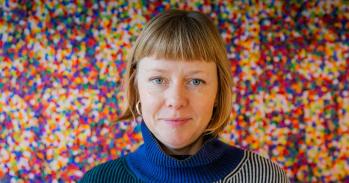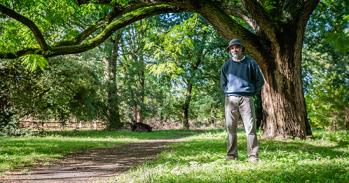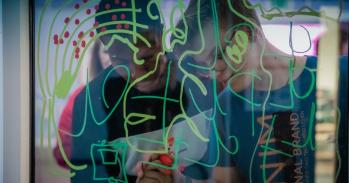
A new exhibition displaying the results of acclaimed young artist Katie Paterson’s residency at the Wellcome Trust Sanger Institute is running at Kettle’s Yard Gallery and St Peter’s Church.
A new exhibition displaying the results of acclaimed young artist Katie Paterson’s residency at the Wellcome Trust Sanger Institute is running at Kettle’s Yard Gallery and St Peter’s Church.
We can all appreciate how fossils can be transformed into beads on a necklace to become a work of art, but how does genetics fit in? The answer is simple: DNA.
Chris Tyler-Smith
Paterson’s remarkable poetic and conceptual projects, inspired by her collaboration with leading scientists and researchers across the world, consider our place on Earth in the context of geological time and change. Along with several other recent artworks, the exhibition also features a major new piece by the artist: Fossil Necklace.
The piece, described by Andrew Nairne, Director of Kettle’s Yard as “highly original and imaginative”, is constructed from more than 170 carved fossil beads, each one representing a moment in time, and together charting the evolution of life on earth. The oldest fossil used is over 3.5 billion years old.
Paterson was inspired to create the necklace by her work with scientists at the Sanger Institute. The Institute’s Dr Chris Tyler-Smith explains: “We can all appreciate how fossils can be transformed into beads on a necklace to become a work of art (…) But how does genetics fit in? The answer is simple: DNA. There really is a ‘tree of life’ linking every living and extinct species. Fossils and DNA both provide partial glimpses of the same tree. The information is complementary”.
The necklace will be displayed in St Peter’s Church, next to Kettle’s Yard. Also displayed, in the main Kettle’s Yard Gallery, are other pieces that address themes of time and scale in different ways, including Paterson’s Inside this desert lies the tiniest grain of sand project, achieved in collaboration with nanotechnology experts.
The exhibition will run from 26 April to 23 June 2013.
This work is licensed under a Creative Commons Licence. If you use this content on your site please link back to this page.





